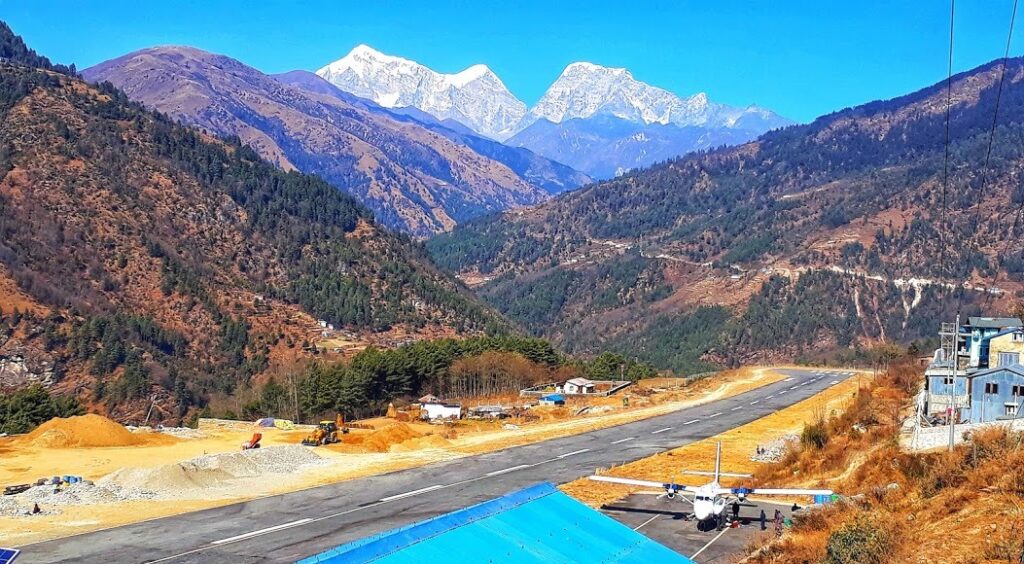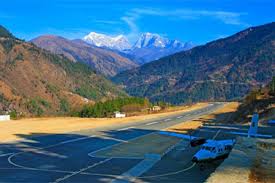After a 17-day suspension due to continuous adverse weather conditions, flights have finally resumed at the Phaplu Airport, a critical aviation hub in the Solukhumbu district of Nepal. The Civil Aviation Authority of Nepal (CAAN), Phaplu Office, confirmed that a Nepal Airlines Twin Otter aircraft successfully landed at Phaplu Airport from Kathmandu on Wednesday, marking a long-awaited moment of relief for residents and tourists alike.
Flight Resumes After Prolonged Suspension
According to Ayush Thapa, Senior Officer at CAAN Phaplu, Nepal Airlines operated the resumed flight with 12 passengers on board from Kathmandu. The aircraft safely returned to the capital carrying 10 passengers. Since Jestha 26 (June 8), flight operations had been completely halted due to persistent rainfall and dense fog, making flying conditions unsafe in the region.
“The local weather changes frequently and unpredictably, especially during the monsoon season, which leads to prolonged disruption in flight schedules,” said Thapa. “We were able to resume flights today after evaluating safe flying conditions.”
Medical Emergencies in Jeopardy During Flight Disruption
The flight resumption comes as a major relief to locals who were facing extreme hardship, particularly in handling medical emergencies. Local resident Padam Shrestha shared the growing difficulty in transporting critical patients from Solukhumbu to Kathmandu during the airport closure.
“When flights were not operating, seriously ill patients had to be transported via road, often taking many hours to reach Okhaldhunga or Biratnagar,” said Pemba Sherpa, another local. “This posed a life-threatening challenge, especially for those in critical condition.”
Health workers in the district reiterated that the lives of numerous patients were at risk during the period when flights were suspended. In the absence of quick aerial transport, even emergency referrals had to rely on treacherous road journeys.

Phaplu as a Gateway for Tourism and Lukla Alternative
Solukhumbu, home to the famed Mount Everest, sees thousands of trekkers and mountaineers annually. While Lukla Airport is widely known as the main gateway to the Everest region, Phaplu Airport serves as an important alternative, especially when Lukla faces capacity or weather-related issues.
However, the recent flight disruptions have impacted tourism flows as well. According to local transportation entrepreneur Mingmar Sherpa, “Tourists who originally planned to access the Everest region via Phaplu were forced to alter their itineraries or cancel trips altogether due to unreliable flight schedules.”
No Regular Flights Beyond Nepal Airlines
Currently, Nepal Airlines remains the only carrier operating scheduled flights between Kathmandu and Phaplu. Private airlines have not included regular services in their schedules, citing reasons like low passenger volume and unpredictable weather patterns.
Nepal Airlines has fixed its flights to Phaplu four times a week, on Mondays, Wednesdays, Fridays, and Saturdays. However, due to constant weather-related challenges, many of these scheduled flights are frequently canceled. According to CAAN Phaplu, flights can only operate approximately 10–12 days per month on average due to monsoon disruptions.
Another significant challenge is the limited number of Twin Otter aircraft available for Phaplu operations. Aircraft maintenance, shortage of pilots, and technical issues also affect the airline’s ability to operate consistently.
Road Route Remains Risky and Inconvenient
Though the distance from Phaplu to Kathmandu via road is approximately 275 kilometers, the route is still not considered fully safe or efficient for regular travel. Several sections, especially along the BP Highway, Khurkot, and Kavre areas, are susceptible to landslides and roadblocks, especially during the monsoon.
“Forcing a sick person to travel by road from Solukhumbu to Kathmandu is like putting their life in more danger,” said local resident Bimala Rai. “The journey is painful even for a healthy person, let alone someone critically ill.”
Local Authorities Seek Sustainable Solutions
Acknowledging the difficulties faced by the local population, elected representatives of Solukhumbu’s local governments have been drawing the attention of higher authorities to ensure consistent flight operations.
Chief District Officer Anoj Kumar Ghimire stated, “It’s true that regular flights are impossible during bad weather, but we are working on alternative arrangements. We are coordinating with the Nepal Army and private airlines to explore emergency helicopter services during such disruptions.”
He added that without dependable air connectivity, people have to bear significant hardship—especially expectant mothers, patients, and those traveling for urgent governmental or educational work.
A Call for Strengthening Rural Air Infrastructure
The situation at Phaplu Airport highlights the urgent need to enhance rural air infrastructure and emergency preparedness. Regular flight disruptions, while understandable in the face of challenging terrain and monsoon climate, have severe consequences on the lives of those in remote regions like Solukhumbu. To ensure that neither tourism nor emergency services suffer, stronger collaboration between the government, airlines, and local authorities is essential.
As flights resume, locals breathe a sigh of relief, but the episode serves as a reminder of the critical role of regional airports in both tourism and life-saving services.






